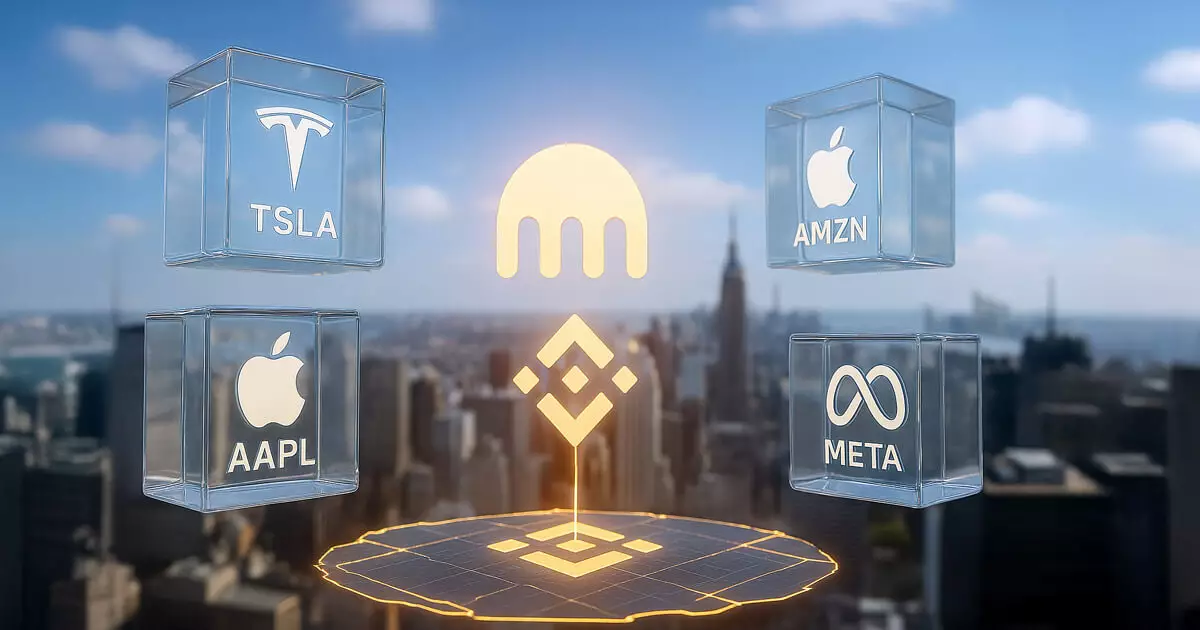Kraken’s recent expansion into the Binance-backed BNB Chain signals a bold shift in how digital assets are bridging traditional finance and the decentralized world. By offering tokenized U.S. equities like AAPLx, TSLAx, and NVDAx through BEP-20 tokens, Kraken is laying the groundwork for a future where global investors can access U.S. stocks seamlessly across borders. This move aims to create a truly multichain environment, fostering “always-on” markets that operate beyond the constraints of time zones and legacy systems. In essence, this is a strategic push toward dissolving geographical and institutional barriers that have long hampered efficient capital flow.
Yet, what’s truly intriguing is the deeper ideological shift Kraken champions: unlocking the potential for programmable settlement and composability with decentralized financial protocols. This hints at a vision where assets aren’t just stored or traded—they are integrated into a broader ecosystem of DeFi services like derivatives, lending, and automated workflows. This “future” promises unimaginable liquidity and flexibility but rests on a fragile foundation that must confront skepticism about stability and regulation.
Challenges and Pitfalls: The Risks of a Multichain Future
Despite its appeal, the move toward tokenized equities is not without peril. Critics from various corners—regulators, traditional financiers, and even some crypto advocates—question whether such rapid tokenization can be managed without creating chaos. The allure of instant settlement and 24/7 trading is enticing, yet it accentuates the vulnerabilities tied to volatility and security risks. Unlike traditional markets with structured hours and regulatory safeguards, crypto markets operate in a hyper-agile universe that can amplify shocks and manipulate fragile liquidity pools.
Furthermore, this push toward multichain, borderless assets threatens to upend the current dominance of established institutions like the NYSE. These legacy exchanges thrive on centralized control, specific trading hours, and revenue streams rooted in transaction fees and data sales. But as blockchain-based platforms enable real-time, decentralized trading, these traditional revenue models face obsolescence. The old guard must either adapt radically or risk being rendered irrelevant by a new paradigm that values transparency, accessibility, and speed over legacy convenience.
Implications for the Financial Power Balance and Regulatory Landscape
This development isn’t merely about innovation; it’s a power play that could reshape financial dominance. As tokenized assets gain traction, traditional players confront existential threats: how to maintain control in a system that lies outside their regulatory and operational comfort zones. For the center-right wing liberal viewpoint, this is an opportunity to foster innovation while implementing sensible oversight—balancing progress with the need for safeguarding investors.
Yet, the rapid growth projected—an explosion toward $30 trillion in tokenized assets by 2030—raises serious questions about consumer protections and systemic stability. Were this to spiral out of control, the fallout could threaten broader economic stability. The challenge lies in integrating these groundbreaking innovations with a regulatory environment capable of managing crypto’s unique risks without stifling the competitive edge these developments offer. Without strategic oversight, the promise of a multichain, tokenized world risks devolving into chaos, where volatility and fraud flourish unchecked, undermining the very stability it aims to enhance.
















Leave a Reply